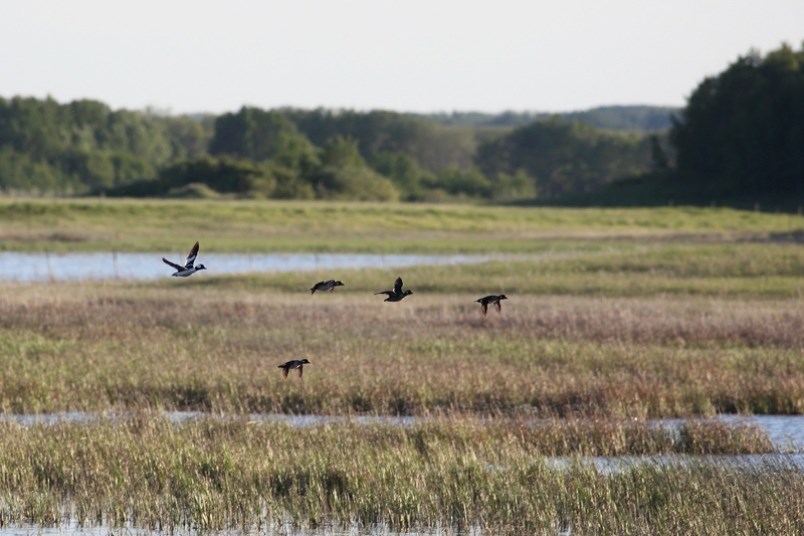The Municipalities of Saskatchewan (MOS) is stepping into the deep end of wetlands drainage and water quality on the Prairies.
Previously called the Saskatchewan Urban Municipalities Association, the lobby group representing cities, towns, villages and resort villages voted to approve the two matters during a resolution session at its annual convention Tuesday afternoon.
For the wetlands policy item, delegates voted 170-46 to lobby the provincial government to “develop and adopt a wetland policy comparable to the policies currently in place in Alberta and Manitoba.”
Thanks to the second resolution, which won with 192-23 votes, the MOS is to lobby the province to “direct (the Water Security Agency, WSA) to publish online quarterly” water quality test results from lakes and rivers, with comparisons to the WSA’s 2015 contaminant water levels.
Both resolutions reference water flow and toxin-causing nutrient run-off (like phosphorous) as evidence of the need for a wetlands drainage policy and more recent water quality data.
Yorkton-area cattle producer Jeff Olson believes a wetlands drainage policy has been needed for a long time, citing concerns he heard from cottage owners as far back as the 1990s.
He’s now the managing director for the Saskatchewan branch of the Citizens Environmental Alliance, a concerned citizens group with branches in Canada and the United States.
In the 1990s Olson worked with the Ministry of the Environment.
“I was in Wadena about illegal drainage ... into the fishing lakes that eventually flooded the cabins out. So I heard as early as that about concerns involving farmland drainage and how much of a problem it is.”
He said he received calls from several parts of the province, like the North Battleford, Lloydminster, Assiniboia, Weyburn, Yorkton and Francis areas.
More recently, Olson worked as a watershed planner with the WSA for 36 years, during which he heard concerns about wetland drainage from some agricultural producers.
“The farms are getting bigger … the neighbours that are doing the drainage are usually 5,000 or 10,000 acres and absentee landowners (who) are allowing their renters to do it; not the small 60 to 70 head (of cattle) guy or the guy doing a couple thousand acres.”
He believes the provincial government is still “pro-drainage,” adding only recently has it started to "recognize it’s a problem and they’ve been in the process of trying to develop a wetlands policy, but I’m afraid the draining part of the agriculture industry is really balking at anything happening right now.”
Unlike Manitoba and Alberta, Saskatchewan doesn’t have a wetlands drainage policy. A 40-acre research site announced last July is to study the effect of wetlands drainage on soils and downstream water users.
At the announcement, MLA Lyle Stewart said a drainage policy is a likely outcome.
Lynne Saas, the member services co-ordinator for the Provincial Association of Resort Communities of Saskatchewan, confirms her group is also eyeing wetlands drainage issues.
“The majority of cottage owners are concerned about preserving wetlands for the cleansing role they play on lakes,” she said.




